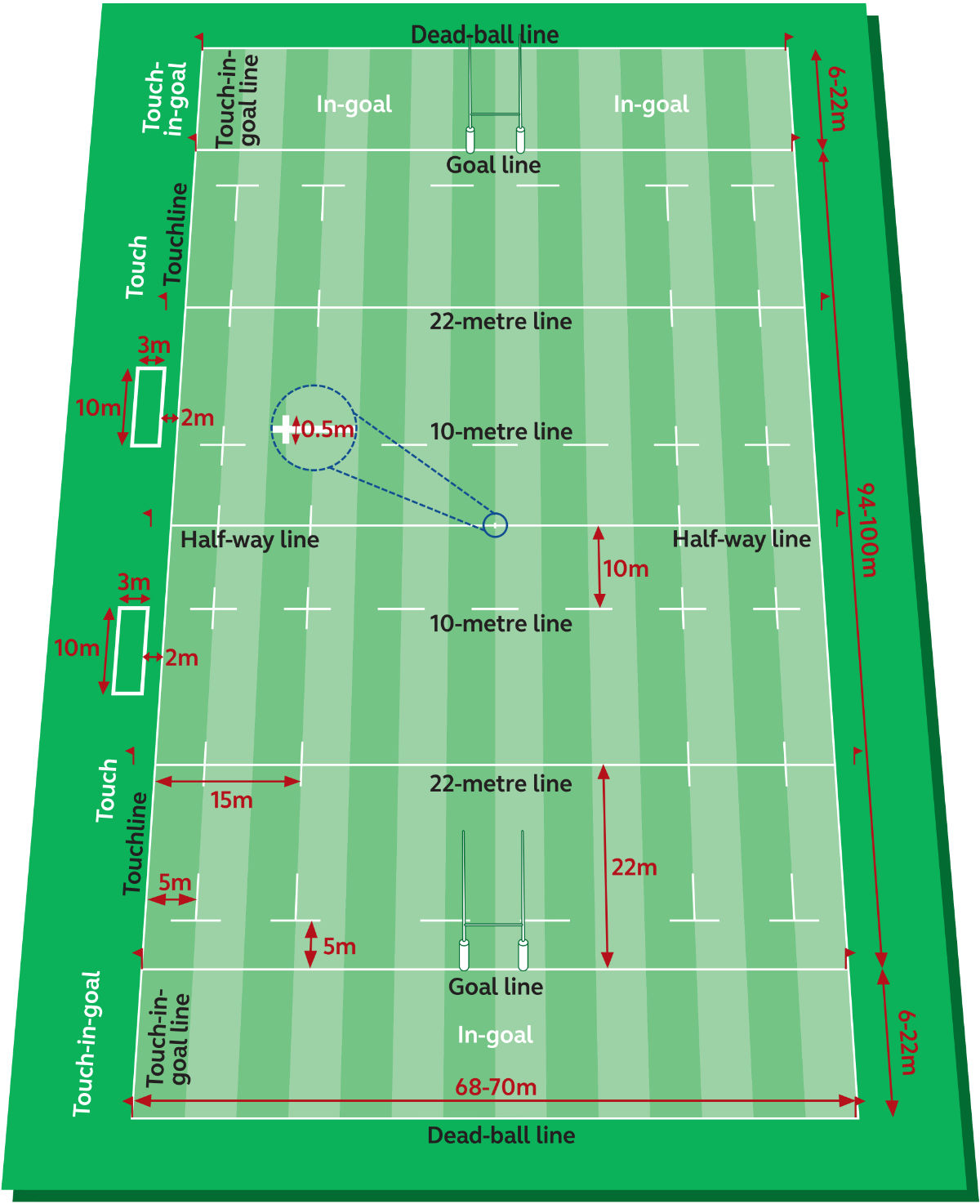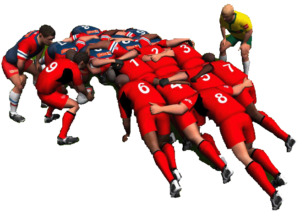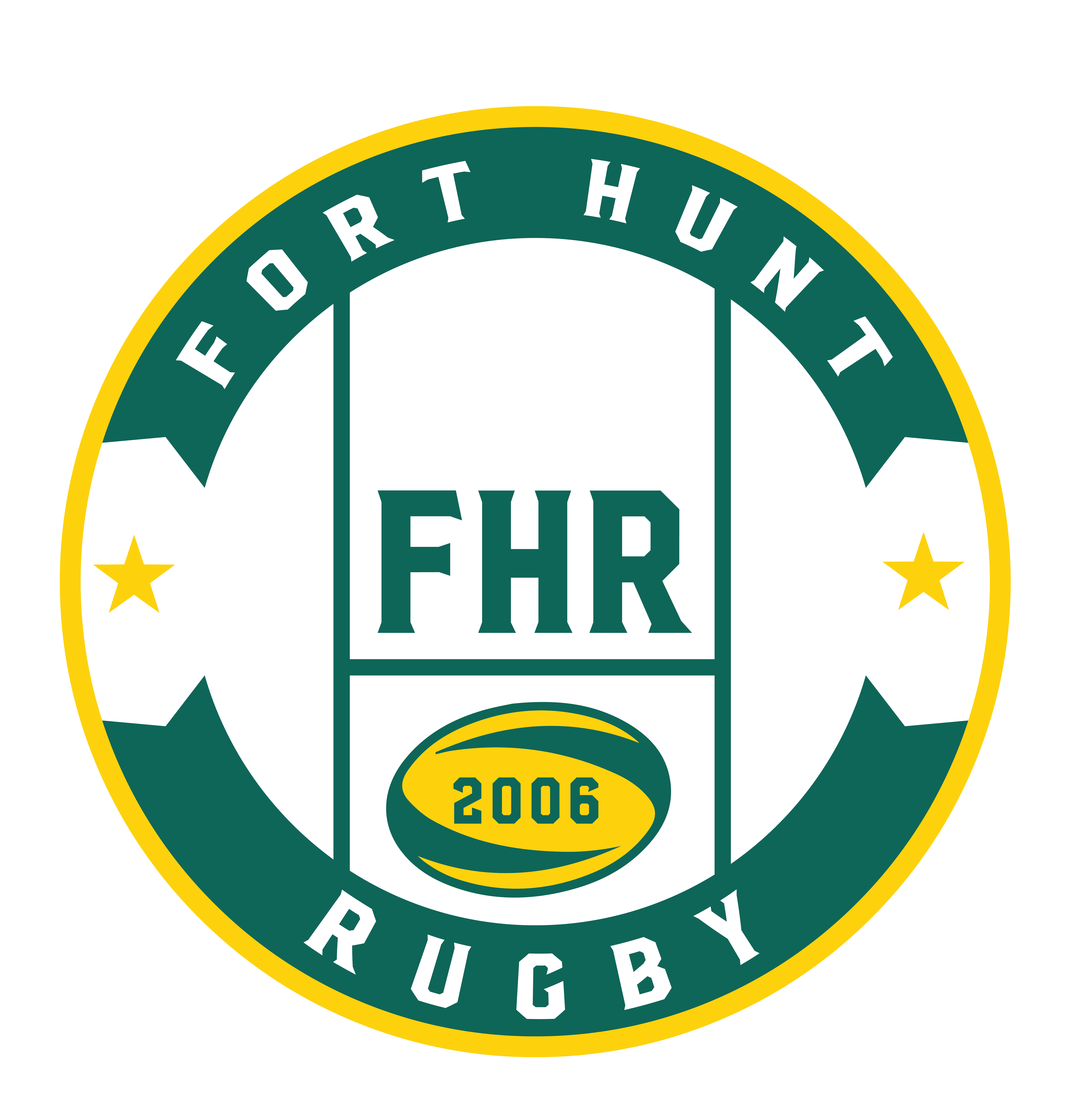Rugby Lingo
Ya gotta know what we’re talking about…
Backs: In 15-a-side rugby, this is the group of 7 players who do not play in the scrum. These usually are the faster (and sometimes/maybe smaller) players who run the ball in the open field. Backs usually have really clean uniforms and magnificent wavy hair, and wear jerseys numbered 9 to 15. Click here for a video showing various backline attacks.
Back Row: In 15-a-side rugby, this is the group of 3 scrum players made up by the two flankers and the 8 Man (#s 6, 7 and 8). They are the fastest players in the scrum and are the breakaway players who depart the scrum quickly to support offensive attack or to augment the defense. Click here for a video explaining and showing the scrum’s back row.
Boots: The British term for “cleats.” These are your studded sports shoe. Traditionally, rugby boots have a hard toe and come with removable studs, although molded soles are just fine for our game as we play a lot on artificial turf. Some rugby boots also come in high-top models. See our Rugby Gear page for links to places to get rugby boots.
Crash Ball: Usually a forward or other player taking the ball on a short pass from a scrum, ruck, or maul at a full-on run right at the edge of the formation to crash through the defensive line and to draw in defenders. Click here for a video of the South African Cheetahs showing the classic crash ball tactic.
Drop Goal: This is a drop kick, that is, a kick made from dropping the ball from the hands and kicking it as it rises on the first bounce. A drop goal may be attempted by any player at any time during open play, and for successfully making the kick (over the opponent’s crossbar and between the uprights) 3 points are awarded. A conversion after a try or a penalty kick at goal may be taken as a drop kick, but usually kickers prefer to place the ball or use a tee. A drop kick also starts a game and restarts all play from center after a score. Here’s a
drop goal compilation.
Eight Man: Also known as the “Number Eight.” In 15-a-side rugby this is the last/back player in the scrum, and wears–duh–#8. This is one of the most flexible and demanding positions on the field. See this video from the UK’s Exter Chiefs
describing the 8 man.
Flanker: Also traditionally called “wing three-quarter.” A term for a player who plays wing three-quarter or “breakaway” in the scrum. Also called a wing forward. These players usually wear 6 or 7. Usually, the two flankers are two of the best all-around players on the rugby field, capable of all aspects of both offense and defense, can kick, and are exceptionally aggressive, fit, and quick. Here’s a
video on the flankers from arguably one of the greatest flankers ever, Richie McCaw.
Flyhalf: The player who usually is in charge of the backs, who makes the tactical decisions regarding offensive attack. This player wears #10. Here’s a
video on the roles of a flyhalf.
Fullback: The last line of defense, the extra man to join in offensive attack, and usually one of the strongest ball fielders, catchers, and kickers. The fullback usually plays behind the back line as an offensive or defensive reserve, and fields and clears long kicks. He/She wears #15. Here’s a video about the
role of the fullback.
Hooker: Also simply “Hook.” The center front row player in a scrum whose job it is to “hook” the ball with his/her feet when it is rolled into the tunnel at a scrum. This is one of the most demanding positions in rugby. This highly specialized player wears #2. Here’s a
video explaining the hooker position.
Inside Center: or colloquially, “in-center.” One of the strongest runners on the field, the rough equivalent of a football fullback. He/She plays in the center of the backline and is the backline attacking power and defensive bulwark. This player usually wears #12. Here is a video about
the role of the two centers.
Kit: The trappings of a rugby player, including warm-up, boots, uniform, and all assorted gear. A player’s kit goes into his/her kit bag.
Kit Bag: What a player puts his/her kit into (photo).

Knock-Forward: An inadvertent/accidental instance in which the ball is propelled forward (toward the opponent’s goal) with the hands, arms or torso, usually from something like a missed/dropped pass or a flubbed pick-up from the ground. This results in stopped play and a scrum, with the opposing team putting in. It does not matter whether a knock-forward is accidental or not; the result is a scrum with the opposing team throwing the ball in. Here’s a
video explaining the knock-on.
Knock-On: Same as “knock-forward.”
Laws: The rules of the game, except in rugby they are called “The Laws of the Game.” Rules are made to be broken; laws are not.
Lineout: A lineout is a formal formation used to bring the ball back into play after going into touch (out of bounds). The two teams form parallel lines opposite the place where the ball went into touch, and the ball is thrown down the center of the passage, where the two teams compete for possession by jumping for the ball. Here is a British
guide to lineouts.
Lock: See “Second Row,” below.
Lock Forward: See “Second Row,” below.
Loop: A move by which a player makes a pass, then follows the passed ball down and behind the attacking line, looping
behind his/her own players to end up farther out in the running line, or all the way on the far end, effectively adding an additional offensive player to the attacking group. Click here for a
video on looping.
Maul: A maul is a transitional, informal formation which occurs at a breakdown in open play, where a ball carrier is halted by one or more opposing players, and the group contests for possession of the ball, with the
ball in their hands and the players on their feet/off the ground. A maul usually forms when a player turns to present the ball before being tackled, or if a tackler is unsuccessful in bringing the ball carrier to the ground. Here’s a
maul video.
Number 8: see Eight Man, above.
Outside Center: Same as the inside center, just one more slot toward the outside, toward the wing. This player usually wears #13. Here is a video about
the role of the two centers.
Pitch: a rugby practice or game field.

Prop: The two outside players within the front row of the scrum. There is a right prop, known as the “tight-head,” and the left prop, known as the “loose head.” They prop up the hooker between them in the front row of the scrum. These specialized and strong players wear #s 1 (loose-head) and 3 (tight-head). Props have a universal reputation in rugby as the roughest, toughest, burliest players of them all, and arguably have the most difficult and most physically demanding jobs on the field. In professional rugby, many props are the most highly paid players due to their requirements for great physical strength, stamina, and experience and skill in an extremely demanding position. Here’s a
video on the role of the props.
RFC: an abbreviation for “Rugby Football Club.”
Ruck: A ruck is a transitional, informal formation which occurs at a breakdown in open play, where a tackled player is brought to the ground and releases the ball. At least one player from each team, while on their feet, bind with one another to contest for the ball with their feet,
with the ball on the ground beneath them. A ruck is what usually forms over a tackled player and tackler when he/she releases the ball at the tackle. Here’s a basic
ruck video.
Rugby Union Football: The official name of the form of rugby we play, which is different from Rugby League Football, Australian Rules Football, Gaelic Football, Gridiron (American) Football, etc.
Rugger: Any player of the sport of rugby union football.
Scrum: This is the basic, referee-controlled formal formation to restart play after a minor infringement of the Laws, such as a knock-on. In 15-a-side tackle rugby it consists of 8 players from each team, and its appearance approximates a line of scrimmage in gridiron football. The two scrums come together, making contact at their respective front rows, and the ball is put into the tunnel between them to restart play, with the ball being moved to the back of the scrum by the feet only (see graphic). In 7-a-side touch rugby it consists of 3 players from each team. Check out this
scrum link for a more detailed discussion.

Check out this
scrum video.
Scrum-Down: Another term for a scrum.
Scrumhalf: The rough equivalent of a football quarterback, he/she is the interface between the scrum and the backs, usually the on-field general, but not necessarily the on-field team captain. This player wears #9 (see graphic). Here’s a
video on the role of the scrumhalf.
Scrummage: Another word for a scrum.
Scrummie: A positive, endearing term for a player who plays in the scrum (props, hooker, lock forwards, flanker/wing forward/three-quarter, eight man).

Second Row: Also known as a “lock” or “lock forward.” There are two within the scrum, and they play in the second row, behind the front row. They are usually the biggest/tallest players on the field, the physical pushing power in the scrum. They wear #s 4 and 5. Here is a
video about the second row.
Skip: Also called a “skip pass” or “cut-out pass.” This is a pass which cuts out or skips the very next teammate in the running line, thereby moving the ball down the line more quickly, either to move it away from the defense or to take advantage of a defensive gap. A “skip two” pass cuts out two players, and a “skip three” skips three players to move the ball much farther out quickly. It is crucial for the player making the skip pass to clearly call his “skip” before he executes it, so the skipped players and the intended receiver are aware of what is happening. Here is a
video on the skip pass.
Strip:
1. A player’s game uniform, as in, “today the Welsh are playing in their all-red home strip.”
Switch: An X-shaped offensive play in which a ball carrier runs diagonally and a teammate crosses behind him/her to receive a pass, thereby instantly “switching” the direction of play. This play is sometimes called a “scissors” play. Here is a
video about running the switch.
Three-Quarter: See “Wing Forward,” below.
Throw-Forward: An illegal pass which is not lateral or backwards, but which is thrown forward (however slightly), toward the opponent’s dead-ball line, whether intentional or accidental. The result is a scrum to the non-offending team.
Touch: The term meaning “out of bounds.” If the ball crosses the sideline, it is said to “have gone into touch.” The official monitoring the touch line is the touch judge.
Touch-Down: the process of grounding the ball in the in-goal area. A try is scored only upon successful touch-down of the ball to the ground in the try zone, which occurs with downward pressure with the hands and arms, or with the body from the waist to neck.
Try: The main scoring method of rugby, by which a player successfully touches the ball down to the ground in an opponent’s in-goal area, for which 5 points are given. A successful conversion adds 2 more points. Here is a video of
classic tries.
Wing Forward: Also known as a “wing three-quarter,” “three-quarter,” or “flanker,” there are two in each scrum, one on the left and one on the right. They bind on the outside hips of the props and to the second rows, and provide offensive push and defensive breakaway protection. These players usually are two of the best all-around rugby players on the field, and usually wear #s 6 and 7. Here is a
video on flankers from arguably the best of all time, Richie McCaw.
Wing Three Quarter: See “Wing Forward,” above.
Wing: Usually the fastest two players on the team, they play at the far end of the back line, at the sidelines. There is usually a strong side wing and a weak side wing (so they alternate sides depending on play). These players wear #s 11 and 14. Here is a
video on rugby wings.
——————————————-
POCs are LD Platt, lplatt01@gmail.com, 202-413-7763 and Dale Roach, coachroachjr@gmail.com, 571-926-0709.


 Check out this scrum video.
Check out this scrum video.